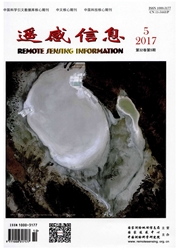

 中文摘要:
中文摘要:
采用北京一号小卫星和环境与灾害监测预报小卫星遥感数据,对徐州西矿区2008年~2009年土地利用/覆盖及景观格局变化进行分析。通过对4种分类方法的比较,选择精度最高的决策树分类图进行分析。试验表明:采矿活动导致徐州西矿区植被面积下降明显,大部分转为建筑用地;同时,矿区土地复垦使塌陷积水面积减少;区域景观破碎化程度有所下降,斑块的形状趋于规则化,景观多样性减小。评价变化检测精度,结果表明:国产小卫星遥感数据能有效地应用于矿区土地利用/覆盖及景观格局变化监测。
 英文摘要:
英文摘要:
In recent years,China has launched Beijing-1,HJ-1 micro-satellites and other satellites.Application fields of micro-satellite remote sensing data expand constantly.But applications in ecological environment monitoring of coal mining area are still few.In order to extend the application of micro-satellite remote sensing data in resource environment and disaster monitoring over coal mining area,the authors analyzed the LUCC and landscape pattern changes of the west mining area in Xuzhou City during 2008 and 2009.Through comparison of four classification results,the decision tree classification which has the highest accuracy is selected for further analysis.The results show that the agricultural land declined obviously due to the mining activities,most transformed to the construction land.Meanwhile,land reclamation in mining area reduced the area of subsidence water.The landscape fragmentation decreased and patch shape tended to regularization.At same time,landscape diversity decreased.The accuracy evaluation shows that the China micro-satellite remote sensing data can be used in monitoring of land use and land cover in coal mining area.
 同期刊论文项目
同期刊论文项目
 同项目期刊论文
同项目期刊论文
 Fusion and classification of Beijing-1 small satellite remote sensing image for land cover monitorin
Fusion and classification of Beijing-1 small satellite remote sensing image for land cover monitorin Dimensionality reduction and feature extraction from hyperspectral remote sensing imagery based on m
Dimensionality reduction and feature extraction from hyperspectral remote sensing imagery based on m Wavelet SVM in Reproducing Kernel Hilbert Space for hyperspectral remote sensing image classificatio
Wavelet SVM in Reproducing Kernel Hilbert Space for hyperspectral remote sensing image classificatio 期刊信息
期刊信息
